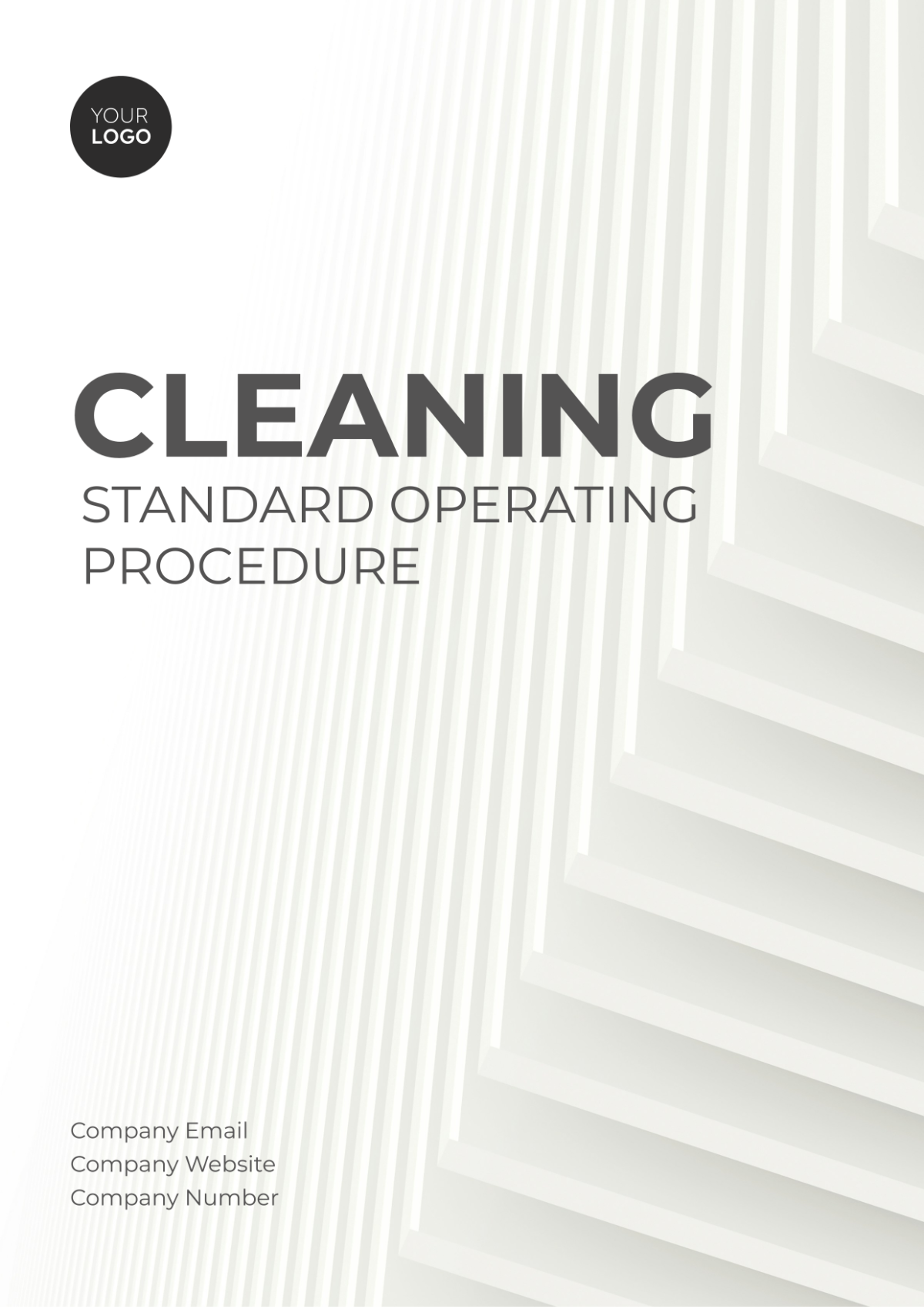Cleaning Standard Operating Procedure
I. Objective
This Standard Operating Procedure (SOP) outlines the protocols and guidelines for cleaning and sanitation within [Your Company Name]. It aims to ensure cleanliness, hygiene, and safety in various environments, including offices, manufacturing facilities, and healthcare settings.
II. Scope
This SOP applies to all employees and contractors involved in cleaning and sanitation activities within [Your Company Name]. It covers the procedures for routine cleaning, disinfection, and waste management.
III. Responsibilities
A. Management
Provide necessary resources for cleaning and sanitation activities.
Ensure compliance with regulatory standards and company policies.
Designate responsible personnel for overseeing cleaning operations.
B. Cleaning Staff
Perform cleaning and sanitation tasks according to this SOP.
Report any issues or deficiencies in cleaning equipment or supplies.
Attend training sessions on proper cleaning techniques and safety protocols.
IV. Cleaning and Sanitation Protocols
Dusting and Surface Cleaning
Use Cleaning Products and microfiber cloths to dust surfaces.
Wipe down surfaces, including desks, countertops, and equipment.
Floor Cleaning
B. Disinfection
High-Touch Surfaces
Disinfect frequently touched surfaces such as doorknobs, light switches, and handrails.
Use Disinfectant Products and follow manufacturer instructions for proper dilution and contact time.
Shared Spaces
Disinfect communal areas like break rooms and restrooms multiple times a day.
Pay special attention to toilet handles, faucet knobs, and other commonly touched surfaces.
C. Equipment Cleaning
Cleaning Tools
Rinse and sanitize cleaning tools such as mops, sponges, and brushes after each use.
Store cleaning tools in designated areas to prevent cross-contamination.
Machinery and Equipment
V. Waste Management
Segregation
Separate general waste from recyclable materials.
Use designated bins for hazardous waste, such as chemicals or biological waste.
Disposal
VI. Health and Safety Guidelines
Use appropriate personal protective equipment (PPE) when cleaning.
Always follow product instructions when using cleaning chemicals.
Ensure proper ventilation when cleaning.
VII. Review and Revisions
Information on how the SOP will be reviewed and updated, including who is responsible for the review and how changes will be communicated.
Revision Number | Date | Description of Changes | Revised By |
|---|
1 | [DATE] | Initial Creation of SOP | [YOUR NAME] |
2 | [DATE] | Updates to reflect changes in [PROCESS/REGULATIONS]. | [YOUR NAME] |
VIII. Approval

[APPROVER’S NAME]
[APPROVER’S ROLE]
[APPROVAL DATE]
Standard Operating Procedures Templates @ Template.net































